Centuries of history within the gothic town hall
During our Christmas visit to the ancient city of Aachen in West Germany, we were offered the opportunity to tour Aachen’s beautiful 14th-century town hall.
The city of Aachen is steeped in so much history, having been the location chosen by the Holy Roman Emperor Charlemagne to build his magnificent palace. Little remains of the palace complex today; however, Aachen Cathedral built by Charles the Great in 805 still stands as one of the oldest cathedrals in Europe.
Aachen Cathedral was one of the first locations recognised by the UNESCO World Heritage Site in 1978.
The striking majestic City Hall sits in the centre of the Old Town. For centuries, it had been hosting coronation banquets and welcoming royalty. Today it is the seat of Aachen’s Lord Mayor and where the International Charlemagne Prize is awarded.
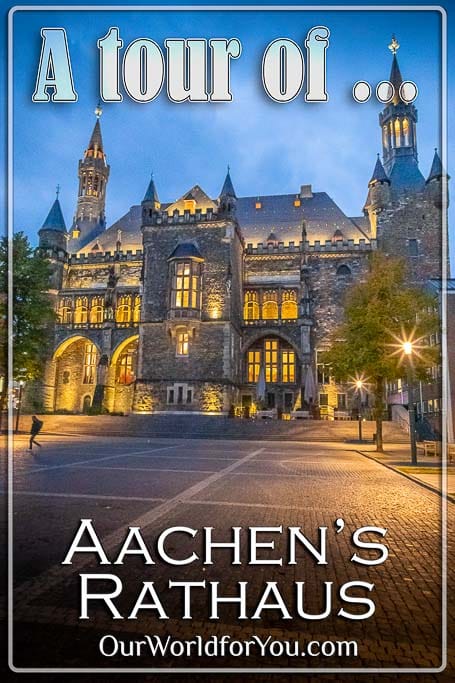
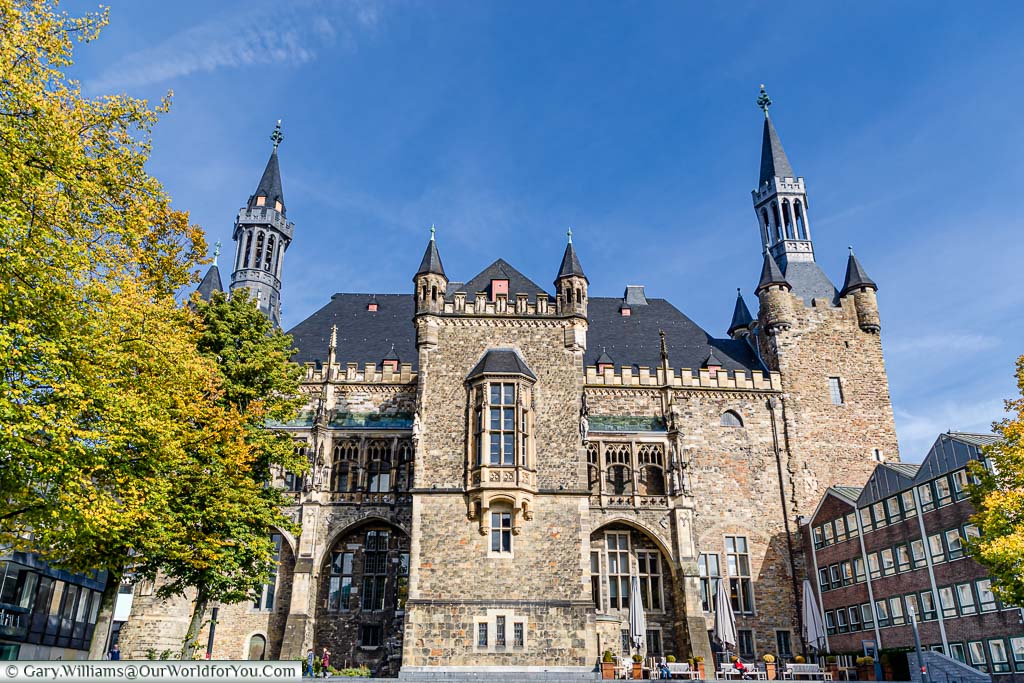
Where is Aachen?
How to get to Aachen
- By Train
Start creating your own Aachen adventure and discover ancient architecture amongst the charming city streets.
In around just 3hrs 35minutes from the UK, you can hop on the Eurostar to Brussels, change onto an ICE train to Aachen Hbf, and the fun begins.
- By Car
If you’re venturing from the UK, jump on Le Shuttle and tour Germany under your own steam.
Alternatively, it’s so easy to visit on a road trip. Rental Cars searches multiple well-known car hire brands and discovers the deals that suit you the best.
A little history on Aachen’s Rathaus
A Town Hall fit for a KingAachen’s Rathaus has been through many turbulent times since it was originally constructed in 1350.
In the mid-14th-century, the Gothic town hall was erected on the foundations of the former King’s Hall of the Carolingian palace. The Granus Tower on the eastern side of today’s Rathaus is one of the only surviving outer walls from Charlemagne’s palace complex.
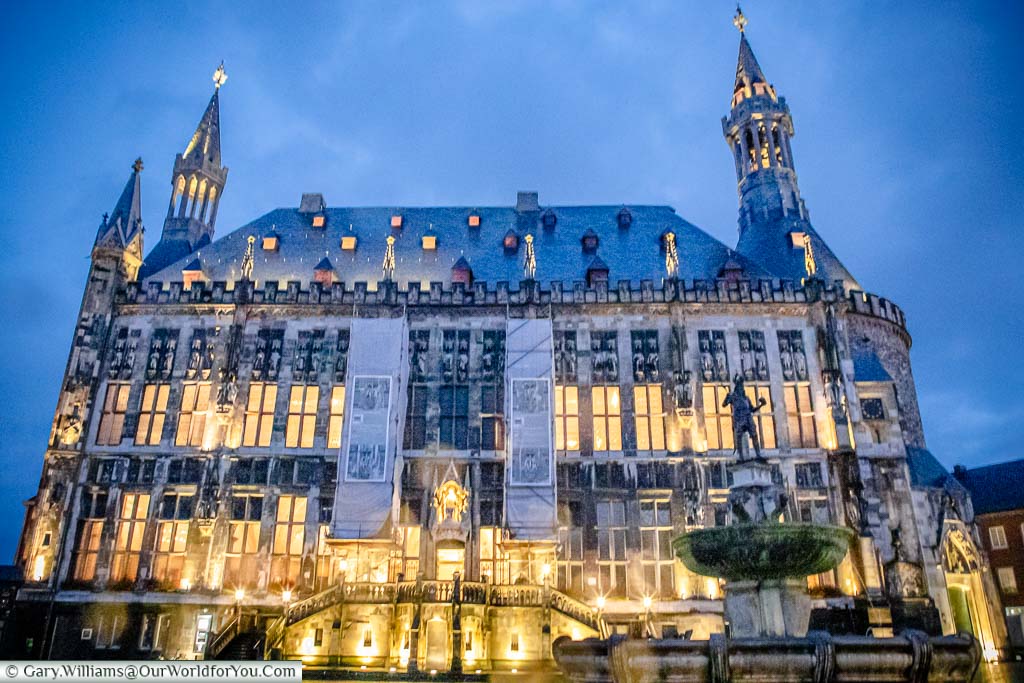
The north side of the Rathaus overlooks Market Place, and the south view is towards Aachen Cathedral, looking across Katschof. The hall was built for two specific reasons the first as the seat of the free imperial city’s civic administration and the second to hold the grandest of coronation banquets.
In 1656 a fire devastated areas of Aachen along with the roof, towers and spires of the Town Hall. Reconstruction soon took place, and it was rebuilt in the Baroque style
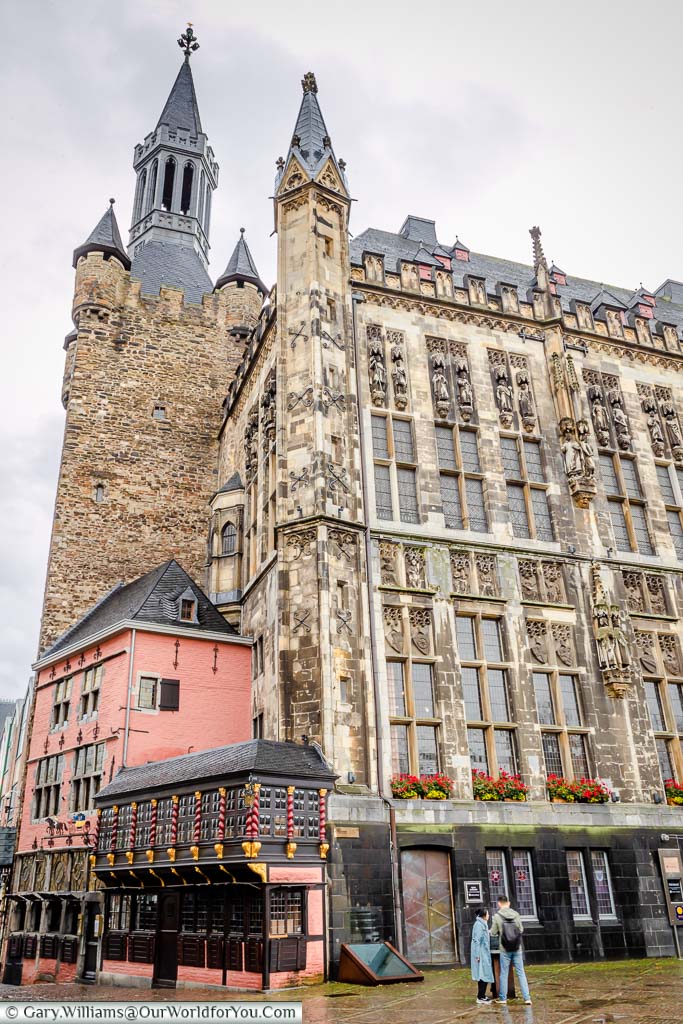
Aachen City Hall became neglected, and when Friedrich Wilhelm IV ascended to the throne of Prussia, the “Emperor’s Hall” underwent restoration during the 1840s in the Neo-Gothic style. In 1883 Aachen Rathaus, unfortunately, suffered another fire, and the Baroque towers were destroyed. The towers were then rebuilt in the neo-Gothic style.
In 1901 the restoration was finally complete, along with the addition of decorative statues to the beautiful façade. During World War II, the Town Hall suffered heavy damage once again, the repair and renovation were complete by 1950, and the Lord Mayor and the city council moved back in.
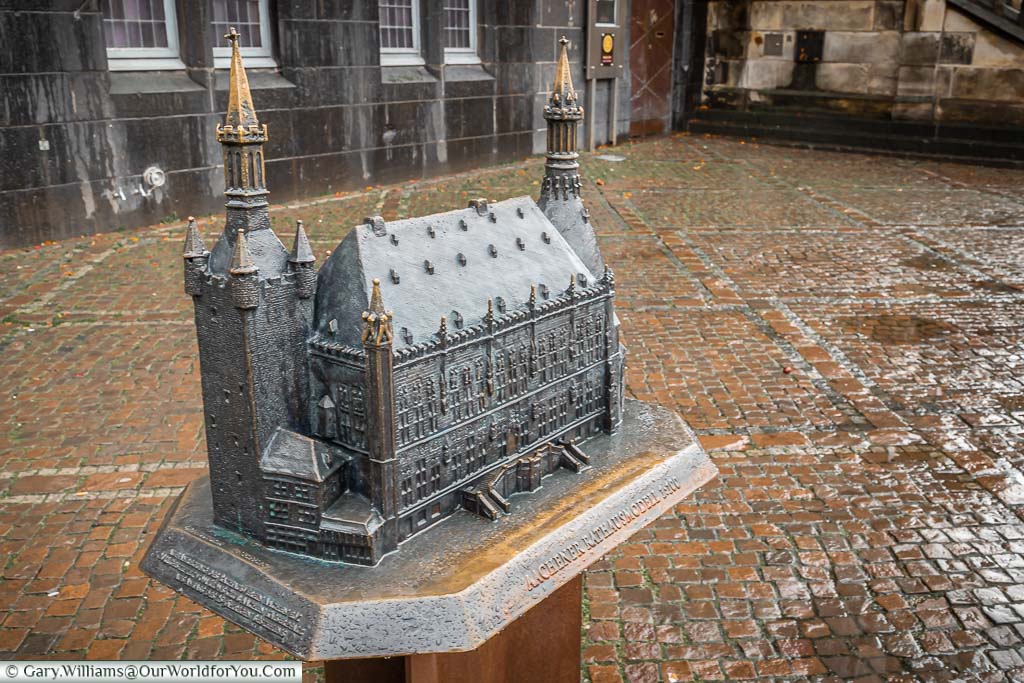
The guided tour of Aachen’s Rathaus
Centuries of ancient footstepsWe were greeted by our charming tour guide Annelore Einmahl, and we set off on a delightful journey around Aachen’s stunning Rathaus.
Throughout the whole Town Hall, the ceilings are vaulted, arching one after the other giving it quite a medieval feel. We head through the foyer where you can catch a short video of the original Carolingian Palace and pass by a painting of Charlemagne looking down upon us.
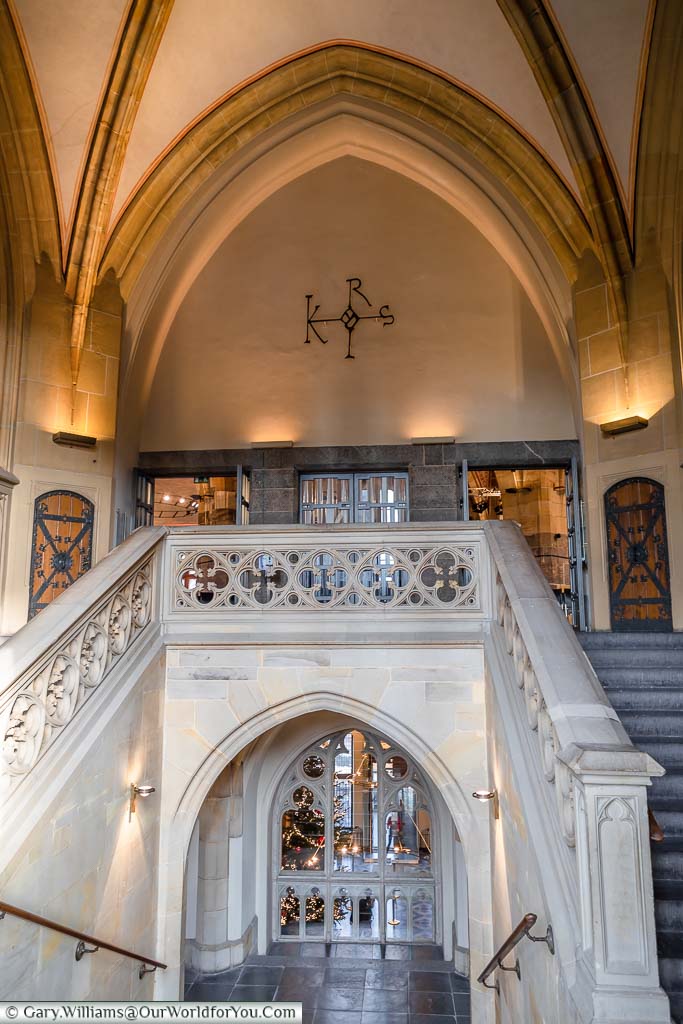
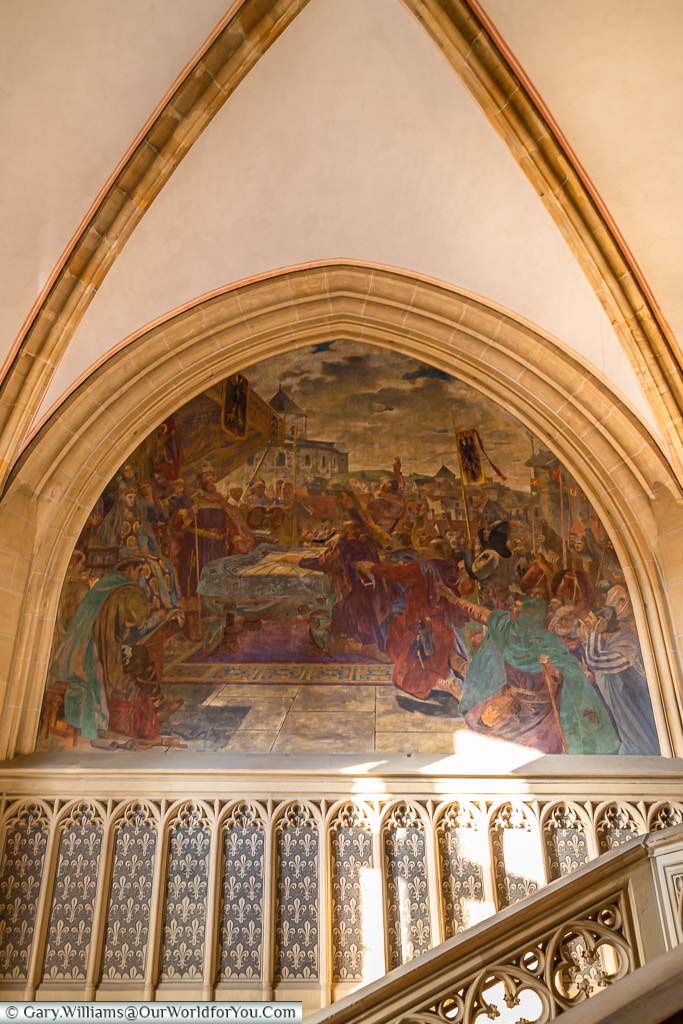
I love nothing more than planning a trip and so often I use the DK Eyewitness books. I find them extremely informative, easy to follow and the pictures and maps tempt you into discovering more.
We used a previous version of this book to plan our Germany road trips, now you can grab the revised copy.
The Coronation Hall
Vaulted ceilings and historic frescoesThe Coronation Hall on the upper floor spans the whole length of Aachen Rathaus, with swathes of the vaulted ceiling unfolding before you.
Every arched segment of the ceiling is delicately painted and almost ripples through the grand hall, with the light beaming in through the huge windows. The secular hall is 45 metres in length and 18.5 metres wide.
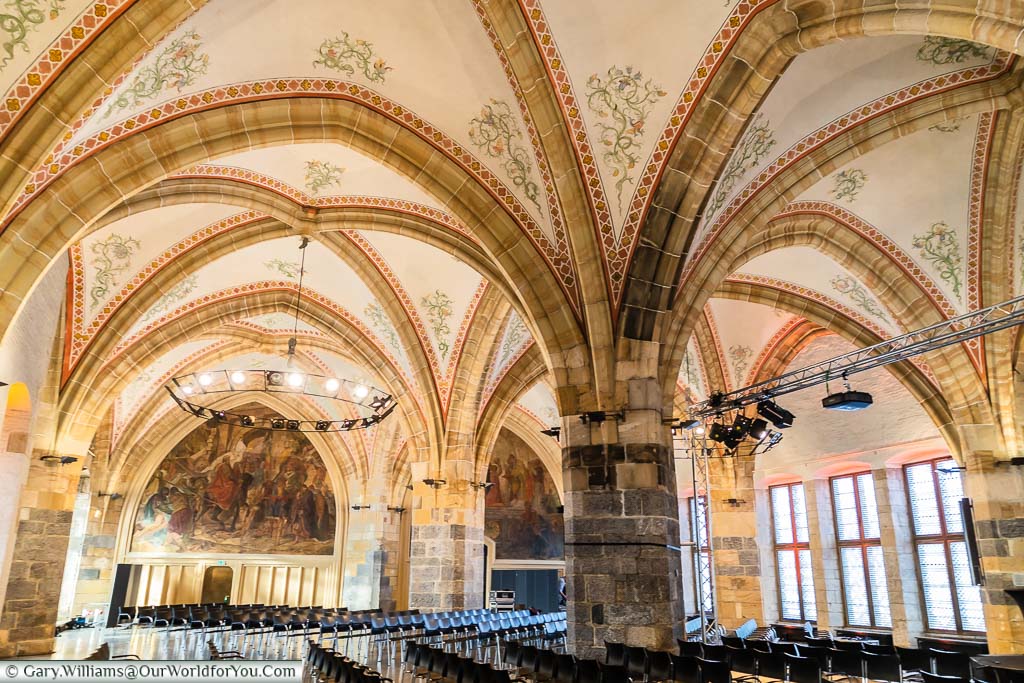
Within the hall are five stunning frescoes painted by Alfred Rethel and his student, depicting significant events and legends from the life of Charlemagne. Four of the frescoes were completed by Rethel between 1847 and 1851, and the fifth was painted by his student Josef Kehren in 1860/61.
Originally there were eight murals; however, during the devastation of the Rathaus in WWII, only five were removed in time and they were stored at the Suermondt-Ludwig-Museum.
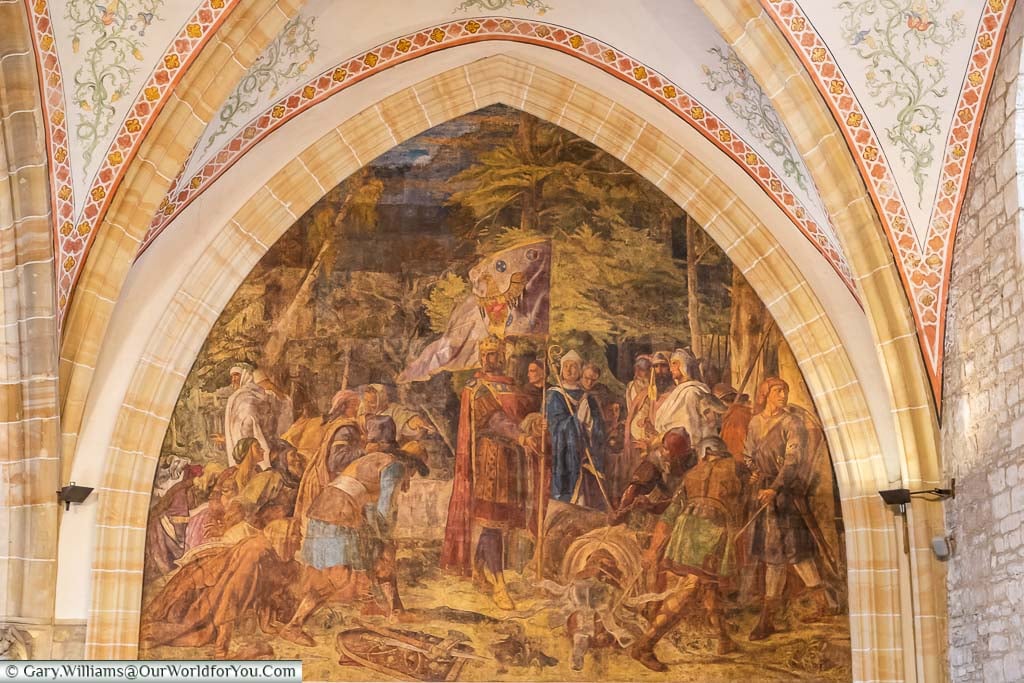
Tourist Information
From Coronation Banquets
To the International Charlemagne PrizeDuring the Middle Ages this splendid hall was used for coronation banquets until 1531. After the King’s coronation, he would proceed from St Mary’s Church (Aachen Cathedral) to the town hall in his elegant robes following behind the Imperial Regalia.
The replicas of the Imperial Regalia, which can be viewed within the banqueting hall, incorporate various majestic items, including the Sabre of Charlemagne, the Coronation Gospels and the Imperial Crown.
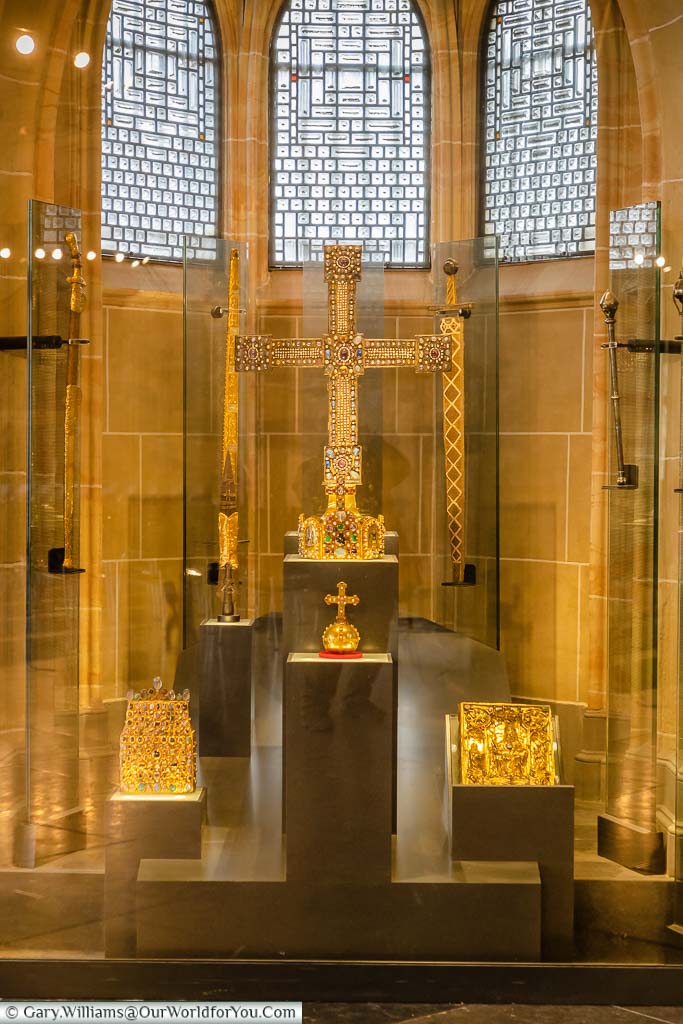
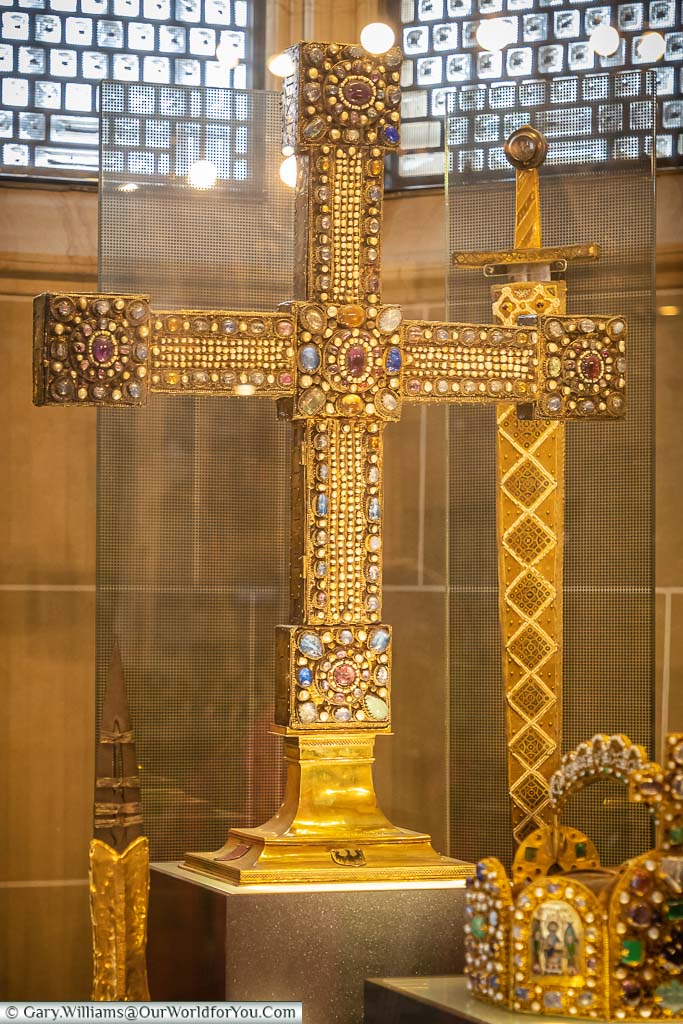
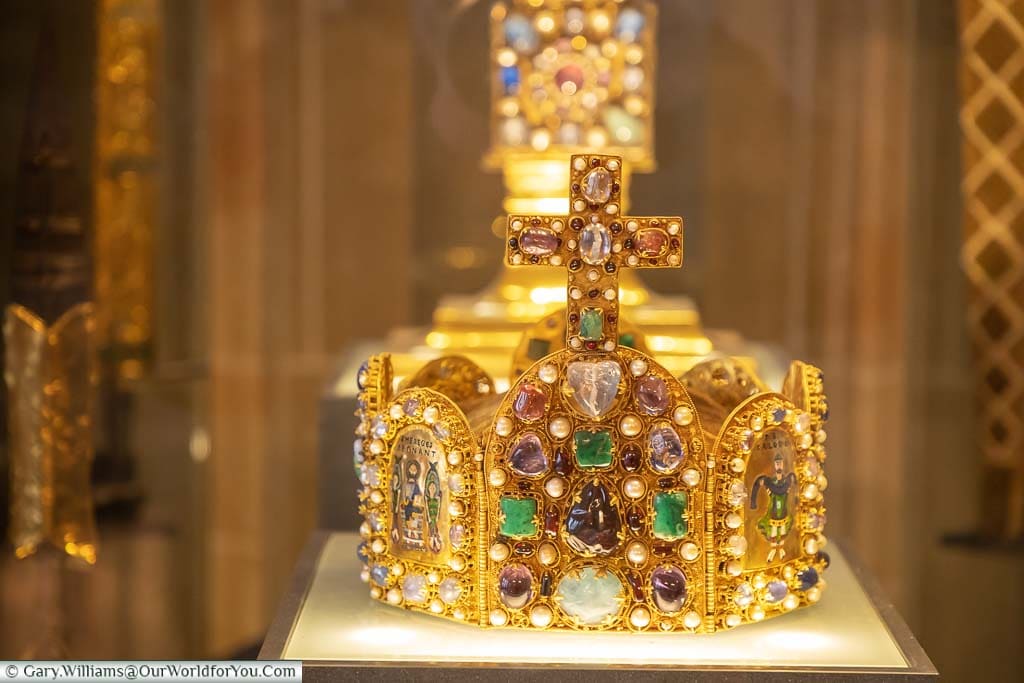
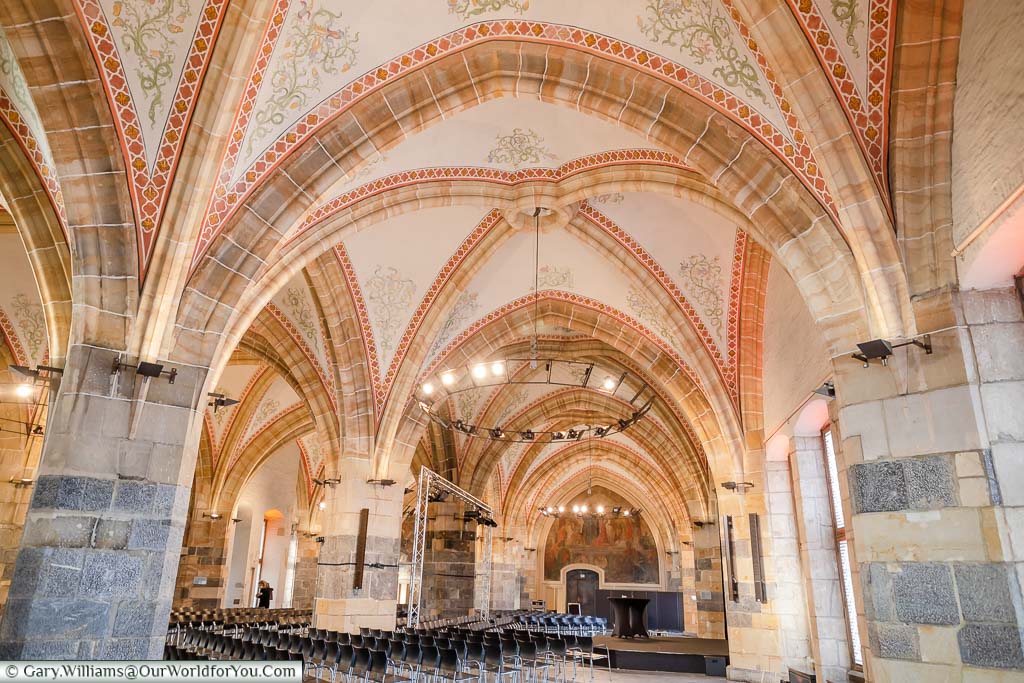
The prize has been presented since 1950 and has been awarded to many significant individuals, including Frère Roger, Pope Francis, Beatrix of the Netherlands and Simone Veil, to name just a few.
Heading back down the Ark Staircase, take a moment and browse through the award ceremony videos taken during the presentations of the Charlemagne Prize.
Things to see and do in Aachen
- Guided tour of Aachen Rathaus
- Visit Aachen Dom - Better still, take a Cathedral tour.
- Visit Centre Charlemagne
- Check out the Couven Museum
- Visit the Cathedral Treasury
- Take an Aachen walking tour
- Don't miss the Elisenbrunnen
Exploring the lower vaulted halls
The Grandeur of Aachen RathausThe eye-catching White Hall had kept its style since 1727 when it was redecorated by Italian stucco artists. As the name denotes, the ornate White Hall feels so grand and is meticulously emblazoned with striking gold paintwork.
Today this beautiful room is also used for wedding ceremonies.
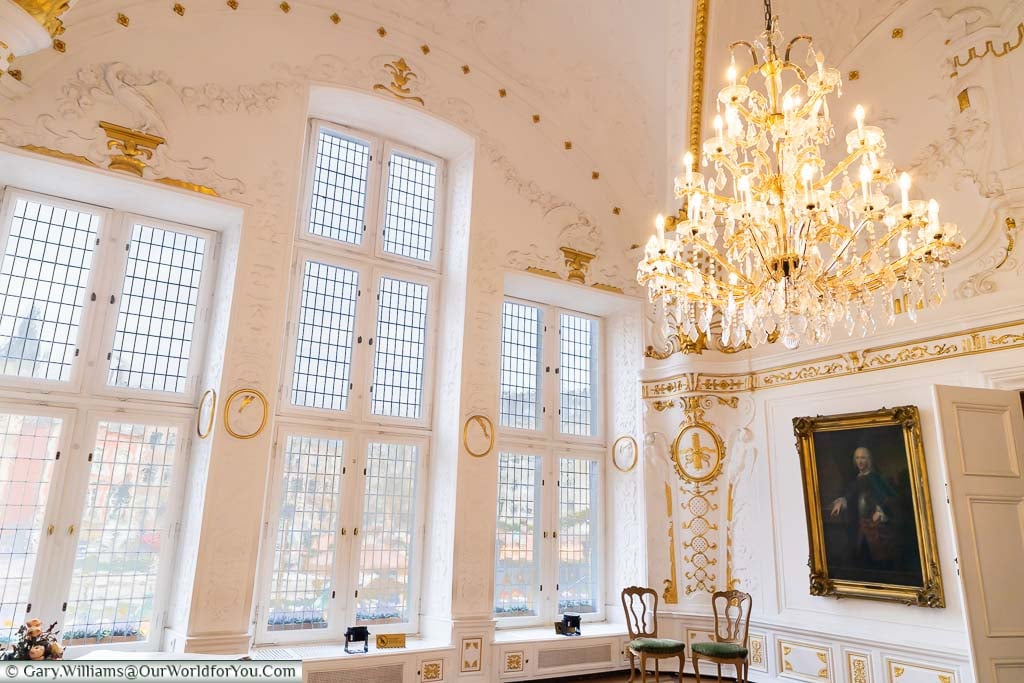
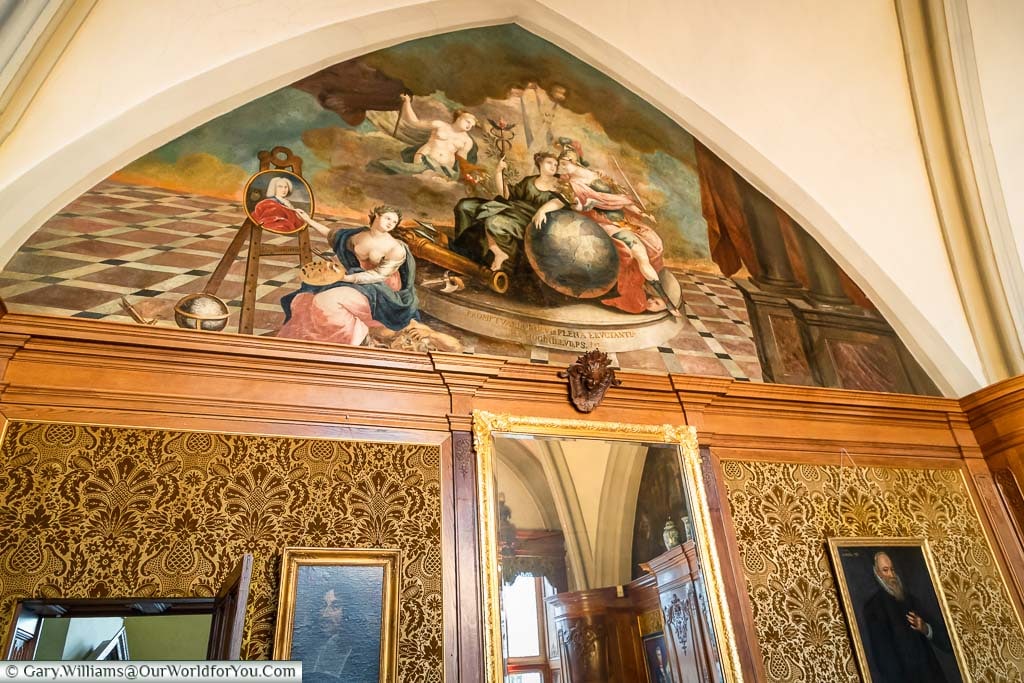
Wandering through The Master Craftsmen’s Kitchen, a moving video can be seen of the devastation caused to Aachen during World War II.
The next room we visit is the Peace Hall, also known as the Red Hall due to its striking red décor. The Peace Hall name refers to the “Aachen Peace” of 1748. The signing of the treaty to end the War of Austrian Succession was due to be held in this room; however, hierarchical disputes meant that the negotiations never took place in Aachen’s “Peace Hall”.
Once again, similar to the rest of this incredible Town Hall this vaulted room is so ornately decorated. In each of the four corners are white and gold busts depicting the year’s four seasons.
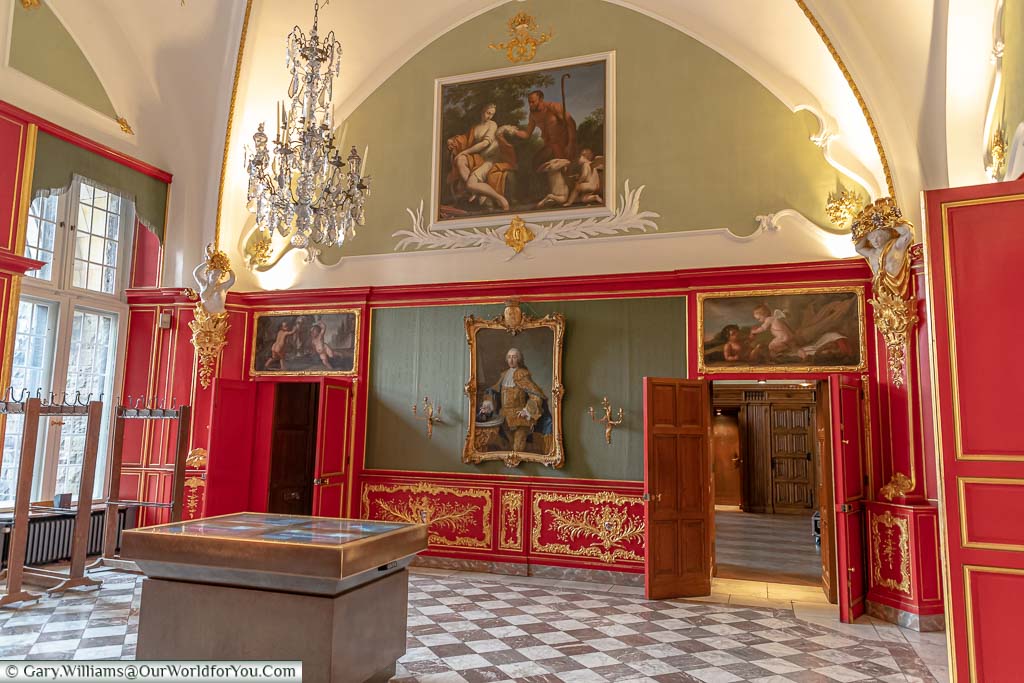
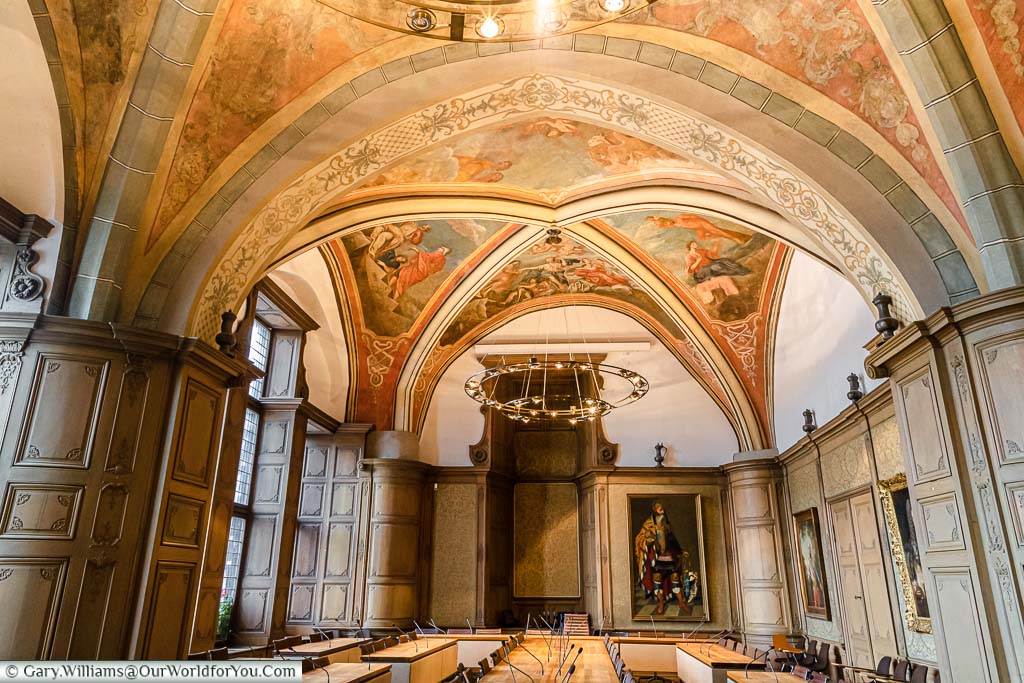
Where we stayed in Aachen
Just a short hop to the Old TownIt is only a short walk (10mins) from the hotel to the Old Town, making it a perfect location for a mini-break or a festive visit to the Christmas markets.
We visited Aachen as part of a road trip, so the underground car park was perfect, and not bad at €14 per day.

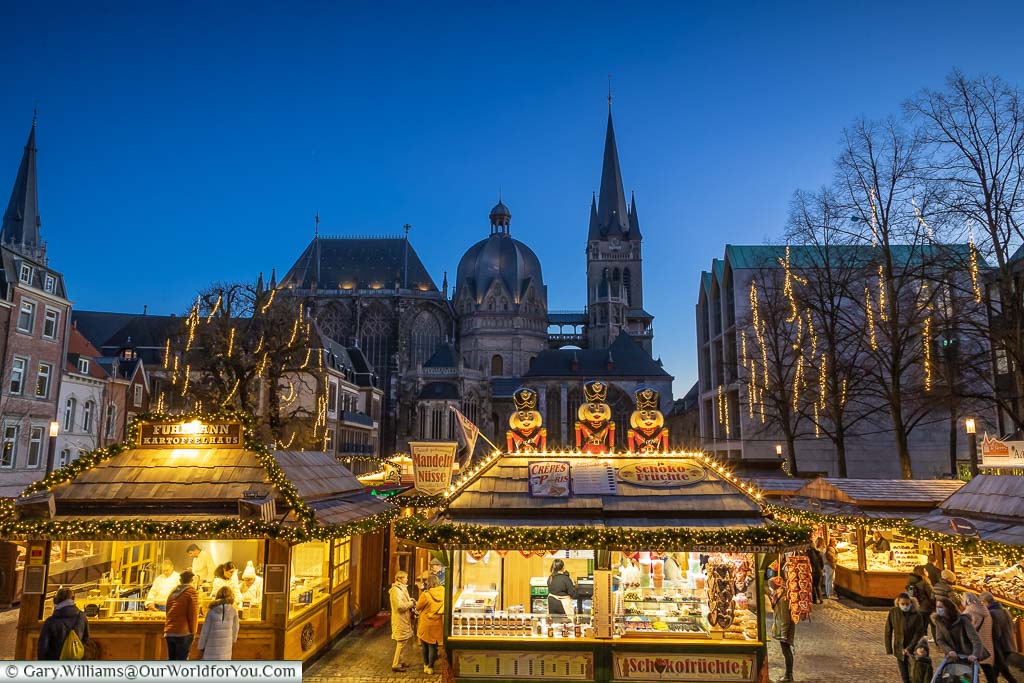
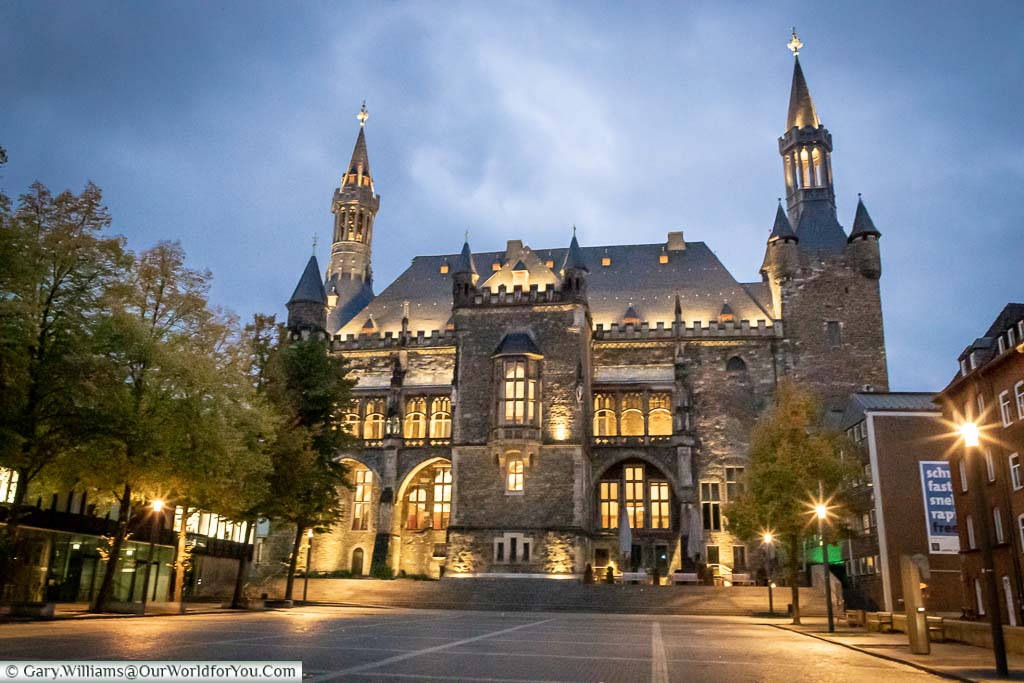

I really enjoy your posts, they are so informative and wide ranging, and the photography just superb. keep-up the good work.
Ahh, thanks very much, Patrick, for your positive comments. We try and make our posts as informative as we can and keep them light-hearted. I’ll pass on your kind photography comment to Gary.
We’re glad you enjoy them.